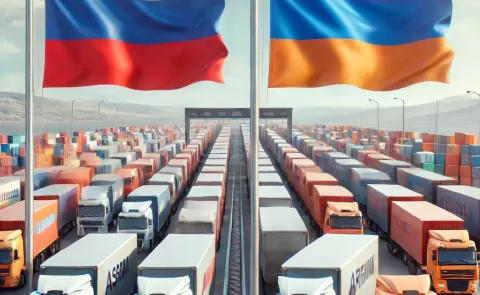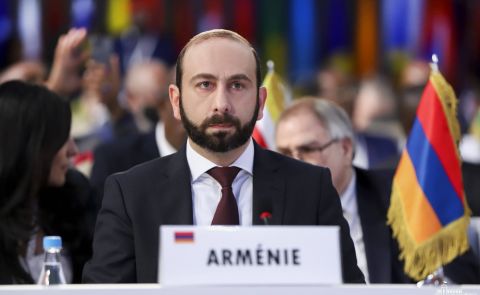
Armenia and Iran are preparing to simplify transportation, but problems remain

Armenia and Iran are exploring bilateral transportation liberalization. Vahan Kerobyan, the Minister of Economy, revealed this in parliament during the discussion of the proposed state budget for 2022. He recalls discussing the subject with Iran's Minister of Roads and Urban Development, Mohammad Eslami, in May.
Trade between the two nations is now conducted through transfers, which means that our Armenian commodities are loaded onto Iranian lorries at the Iranian border. Iranian partners, on the other hand, have noted that Armenia has relatively high customs on foreign vehicles.
"Thus, a discussion is underway so that our cars can enter Iran and receive cargo from the port of Bandar Abbas in the Persian Gulf, and we would reduce duties for Iranian cars. We have a memorandum of understanding on this issue," Kerobyan added.
At the same time, he said, there are still issues with exports to Iran: despite the temporary agreement on preferential trade between Iran and the EAEU (according to which customs duties have been reduced on some goods), the Iranian side applies a variety of non-tariff restrictions, requesting certain papers and procedures. This impedes exports not only from Armenia but also from other EAEU countries, Kerobyan noted.
"We understand that in the negotiations with the Iranian side this issue should be raised more strictly, but it should be borne in mind that Iran, working in conditions of confrontation, is only interested in exporting," Kerobyan noted.
It's worth noting that Armenia is the EAEU member state that deals with Iran the most. Of course, absolute statistics cannot be compared to those in Russia or Kazakhstan. In 2017, commerce between Armenia and Iran totalled $263 million, with Armenia's exports accounting for slightly under 80 million dollars. However, Iran accounts for little more than 4% of Armenia's international commerce, while Kazakhstan accounts for around 0.7 percent and Russia for about 0.5 percent.
See Also


Armenia and Russia Reaffirm Strategic Ties Amid Speculation of Strained Relations

Sergey Naryshkin Accuses Britain of Destabilizing Georgia

Armenia Records 5.9% GDP Growth in 2024, Missing 7% Goal

Yerevan Balances Strategic Ties with Both US and Russia, Says Foreign Minister

